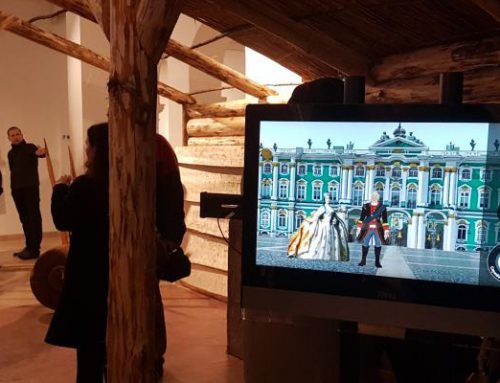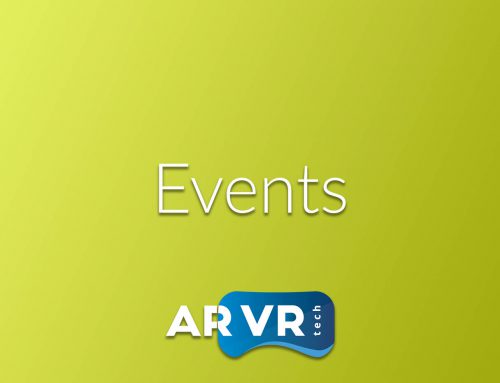
How do we know when we get too personal in our marketing efforts with potential clients? How can we know that we are reaching the prospects that are a good fit for us? The short answer is by trial and error.
In the age of data, engineers and marketers became the miners for the deepest human wants and needs. With adequate tools and analytic thinking they can anticipate next steps along the buyers’ journey even though their motivations and goals evolve and change constantly.
Fashion faces the similar marketing challenges like other industries — оne size does not fit all. We know that size rule every time we try out clothes we like under the beaming store lights. These items need to fit properly and elegantly. Otherwise we will leave them and not buy them. The same goes for marketing: it has to be intentional, engaging and upbeat.
Virtual and Augmented Reality are the next tools to generate the demand and we do so by interacting with our consumers in a meaningful way. Courtesy and human touch do wonders even for these advanced technologies and industry such as fashion that thrives on personalization.
We should not rush potential clients and follow them around the web with strange retargeting. Now their customer journey is at least five touch points before the actual conversion. And once they buy from us, we have to impress them over and over again.
Dynamics of AR and VR can help us target right people at the right time in the saturated market. All the data we collected and mentioned at the beginning of the text need to be assessed with both critical and creative eyes.
Below are three marketing promises which you can apply immediately with augmented and virtual reality solutions. Take your users down the catwalk and enhance the conversation and conversion about your brand.
1. TRACK YOUR PROGRESS WITH WEARABLES
Proximity-based advertising lets marketers target buyers on the basis of their location, but afterwards they can fine tune their messaging with extra information such as age, gender, heart rate, diet, preferred type of activity, and stress levels.
Tory Burch’s team improved the aesthetics of Fitbit; Apple had joined forces with Hermes while Opening Ceremony and Intel made a smart cut off bracelet. Bellabeat smart jewelry made an international revolution in enhancing health of female users and informing them about the parameters which matter to them.
In the future wearables and augmented reality will harness the principles of proximity advertising to a greater extent. Let’s say that you as a keen runner can receive targeted information about discounts and special offers once you have completed a successful run.
2. EXPERIENCE EXCLUSIVITY FROM THE FIRST ROW
It starts like this: the brand warns users that there is a limited-time offer and they get on their tiptoes so as not to miss out on the opportunity. Fast reactions are fuelled when a hint of scarcity is given and such was the case when Topshop Unique partnered up with Inition for a complete Virtual Reality runway during live London Fashion Week.
Ladies who won the virtual reality competition with best posts on Twitter and Instagram were privileged to sit in the window of the Oxford Circus store while the extraordinary VR sets took them to the first row of Tate Modern.
This unique fashion show tapped into the desires of female buyers in three different ways: they were engaged into a lifetime memory to share with their friends; their experience went viral more easily thanks to the fact that they had already stood out on Topshop social media channels where they had won the competition and Topshop got portrayed as a brand at the forefront of customer engagement and innovation.
This is just one among manifold opportunities in the fashion world that offers exclusivity to early adopters who get exposure on social media and test out the innovative technologies. Yes, in case of Topshop – headsets and red carpet turned out to be a perfect match.
3. ENJOY ENHANCED PURCHASE EXPERIENCE
Have you ever gone for a test ride in a car? If you did and liked it, were you in two minds to purchase it? Or you actually realized that after this test drive such a car became to you like an asset you already own? Once you try out the premium experience you are less likely to come back to the previous variant.
The same logic applies to the personalized in-store experience that virtual and augmented reality can provide to the fans of fashion brands. Potential fans can try out amazing items of clothes, jewelry and accessories before they make a purchase.
The customer journey gets longer but because of increased engagement users are more likely to buy even more items in the end as it was difficult for them to decide on one or two things.
What is more, even though the purchase happens from the comfort of one’s home, augmented and virtual reality enable it to take place in some other location: an exclusive store in Paris or a high street shop in London.
Some augmented reality apps go even that far to shorten the time it takes to view different outfits and find the perfect size. The users swipe the card by hand, while the retailers store data such as clients’ size and measurements to ensure seamless experience every time.
Different layers typical in AR transform into extra layers of make-up and unusual hairstyles thanks to Modi Face app. This app was downloaded 50 million times and nearly 5 million users engage with it every month. Now I can figure out should I stick to my hairdo or make it more curly or with lovely highlights.
There are more options than ever to choose from in the world of fashion and very soon virtual and augmented reality are going to get deeply rooted in our decision habits. Then there are here to stay with us just like social media are at the moment.


